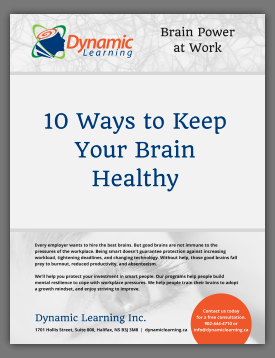Alzheimer’s doesn’t have to be your brain’s destiny, says Lisa Genova, neuroscientist and author of Still Alice. She shares the latest science investigating the disease – and some promising research on what each of us can do to build an Alzheimer’s-resistant brain.
A lot of us fear Alzheimer’s, especially as we get older. We fear it because there seems to be nothing we can do about it. Even after decades of research, there is no reliable treatment or cure. But we can change our brain’s destiny without relying on a cure or preventative medicine.
What neuroscientists understand…
About two brain neurons connecting – tiny space between them – the synapse – neurotransmitters are released. These chemicals transmit signals in our brains. This is where communication happens. The movement of neurotransmitters across our synapses allows us to think, feel, see, hear, desire, and remember.
However, the neurotransmitters include small amounts of amyloid beta. This amyloid beta is cleared by microglia cells every night, so long as we sleep well. Most neuroscientists believe that Alzheimer’s begins when amyloid beta accumulates in the synapses, those spaces we need to think, feel, and remember.
PET scans (a sophisticated medical imaging technique) have shown that in someone 40 years or older, amyloid beta has already begun to accumulate. It is sticky and it binds to itself, forming aggregates called amyloid plaques.
Amyloid plaques:
- can be found in 40-year-old brains but not causing any symptoms of Alzheimer’s.
- take at least 15-20 years of accumulation before the blockages in the synapses can trigger a tipping point – a diagnosis of Alzheimer’s.
Normal forgetting: What did I come into this room to get? What’s his name? Where are my keys?
After the tipping point – a diagnosis of Alzheimer’s:
- Find keys in the fridge and wonder what are these things for?
- Our microglia janitor cells start releasing chemicals that cause inflammation and cellular damage. We think they might even clear away the synapses themselves. Then a protein called Tau twists itself into tangles that choke off the neurons from inside causing massive inflammation, more tangles, and neuron death.
Keep amyloid accumulation from reaching the tipping point.
Think of amyloid plaques as a lit match. At the tipping point, the match sets fire to the forest. For prevention, start before reaching the tipping point. Once the forest is ablaze, it doesn’t do any good to blow out the match. Drugs have failed to reduce amyloid accumulation and tangles – they are only used on people who have already reached the tipping point.
Good news – the way we live can help us decrease our risks of Alzheimer’s.
Let’s picture our risks of developing Alzheimer’s as a see-saw. We are going to pile the risk factors on one arm of the see-saw.
If you are 50 years old, the scale is tipped a little bit. Even with the APOE 4 gene, it doesn’t tip it that much more. For most of us, our DNA does not determine whether or not we get Alzheimer’s.
We cannot change our genes nor can we stop getting older. But there are other things we can do to reduce our risk of getting Alzheimer’s.
#1 is to get enough sleep on a regular basis.
Slow-wave, deep sleep clears away the amyloid beta. If you short-change yourself on sleep over a period of years, you increase your risk of being diagnosed with Alzheimer’s.
A single night of insufficient sleep leads to some of your amyloid beta not being cleared away completely. It starts to accumulate and, the more often you get less than 7-9 hours of sleep each night, the more amyloid accumulates in your synapses.
Other conditions like cardiovascular disease, diabetes, high blood pressure, smoking, and high cholesterol, also increase your risks of getting the symptoms of Alzheimer’s.
What helps? Getting enough sleep, of course, plus regular aerobic exercise, and a heart-healthy Mediterranean diet.
But even if you are 65, have inherited the APOE 4 gene, love bacon, and don’t run unless someone is chasing you, you can still protect yourself.
You have not yet set fire to the forest, even though you might have the pathology already ablaze in your brain. You can still protect yourself for two reasons:
- Neuroplasticity reserve: We have 100 trillion synapses – we can afford to lose a few. We gain neurons and synapses from aerobic exercise. And every time we learn something new.
- Cognitive reserve: In 1986, 678 nuns agreed to participate in the Nun Study. The sisters were studied for more than 20 years. They were tested for cognitive acuity every year. After they died, their brains were donated to the study. These brains were examined for signs of Alzheimer’s. In a few nuns, despite plaques, tangles, and brain shrinkage, they had had a high level of cognitive functioning while alive. The scientists called this cognitive reserve. Further research shows that we can increase our cognitive reserve. We can have more functional synapses.
Abundance and redundancy – we can have many backup connections.
We can improve our resilience – we can create more undamaged pathways. Keep learning new things – sight, sounds, new friends. Meet new people, read more books, learn a new language, learn to play a musical instrument, or learn to dance or to sing or develop an engaging new hobby.
Even if you finally get a diagnosis of Alzheimer’s, you are not going to die tomorrow. Keep living and enjoying everything you can. You will not lose your ability to understand love and joy.


